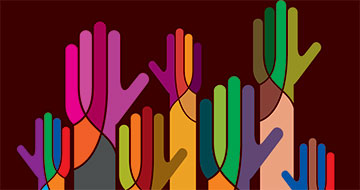

When catastrophe or tragedy strike, people turn to their savings, their insurance plans or their families for help. But at some companies, a specialized monetary fund allows employees to seek help from their colleagues. Employee relief funds — also known as hardship or sunshine funds — provide financial support in times of crisis. While they’re typically employee funded and managed, what role does an employer play in making this option available to its workforce?
Meeting a need
Rollins Inc., a North American commercial services company, established an employee relief fund in 2014, initially seeding it with US$20,000 and then opening it up to employee contributions in January 2015.
The need for such a fund really became apparent after Hurricane Katrina in 2005 and Hurricane Sandy in 2012, says Texas-based Kerry Maples-Battermann, chair of the governance committee for the Rollins relief fund. “Following each of those hurricanes, our employees, both in our local branches and our corporate offices, pitched in with all kinds of donations and assistance in any way they could.”
Read: Happiness, empowerment: Employers share success of engagement programs
The fund doesn’t just offer assistance following natural disasters, she says. “For example, an employee who’s faced with a house fire or a financial crisis can apply, as can a family member of an employee who passed away; they can apply for money to help with funeral expenses. [It’s for] any need of one kind or another, especially when it’s an emergency situation.”
Though financial stress is rising up the list of common issues affecting workers globally, these types of funds are more popular in the U.S., says Nora Spinks, chief executive officer of the Ottawabased Vanier Institute of the Family.
Following the 2008 financial crisis, employees began pooling benefits such as sick days, she adds. “Employee pools started to form, and then they started to get formalized within the workplace,” says Spinks, though she highlights the potential complexities, risks and liabilities around employees pooling money and distributing it to colleagues.
Employee-run
While the Rollins fund has grown significantly in the past four years through voluntary payroll deductions, employees can also make one-time donations in times of natural disaster, says Maples-Battermann.
Though Rollins launched the fund, it’s now employee-run and includes workers from all of the company’s U.S.-based brands. However, it also works with Canadian employee requests on a case-by-case basis.
Read: CGI Group connects staff well-being, charity with annual walking event
In Numbers
61% of Canadians affected by a major emergency, such as a flood, ice storm, blizzard or power outage, were prevented from going to work or school.
32% suffered financial impacts or property loss.
37% of whom received help from family and 24% from a neighbour.
Among the 6% who suffered financial loss, full recovery took more than a year.
Source: Statistics Canada, 2014
“The fund still receives requests for consideration from our Canadian brand,” says Maples-Battermann. “But in Canada, donations aren’t currently tax deductible under the tax code, so we do work with our Canadian operational teams when they make requests for assistance to the team members.”
Lowe’s Companies Inc. also runs an employee relief fund, open to all Canadian staff. It began in 1999, with employee donations matched by the company. To date, the fund has provided around $35 million in assistance to more than 30,000 employees, according to spokesperson Sarah Lively.
Niagara Casinos has two options under its sunshine fund program. One provides workers with up to $2,500 during an unforeseen, serious personal matter that causes them financial hardship, while the other provides a one-time donation of up to $1,000 during an approved family medical leave.
Looking ahead
Employee relief funds are often employee-led, so why are they important to the employer? Rollins positions itself as a family of co-workers, which is part of its company culture, says MaplesBattersmann, noting the company wants to pitch in and help when someone’s in need.
“Putting this non-profit organization together makes available a pool of money for employees that are facing a tragedy,” she says. “And when that happens, employees who want to help don’t need to write an unplanned cheque. When a co-worker experiences a catastrophe, the fund is there and available for anyone to be able to use.”
Read: What you don’t know about your employee assistance program
While Spinks doesn’t see this type of funding as the next big employee benefit, she notes people are providing assistance through the workplace in the same way it’s traditionally been done through religious communities, neighbourhoods or charitable contributions.
“Will employers jump into this quickly? Certainly, the idea of being a compassionate employer is increasing,” says Spinks. “Will this be one of those vehicles that helps them demonstrate they’re a compassionate employer? It could be for some. I think the big challenge is around privacy, confidentiality, management, communication and taxation.”
Ryan Murphy is a former associate editor at Benefits Canada.
